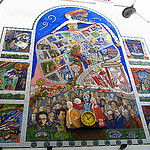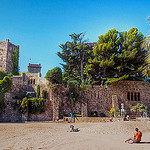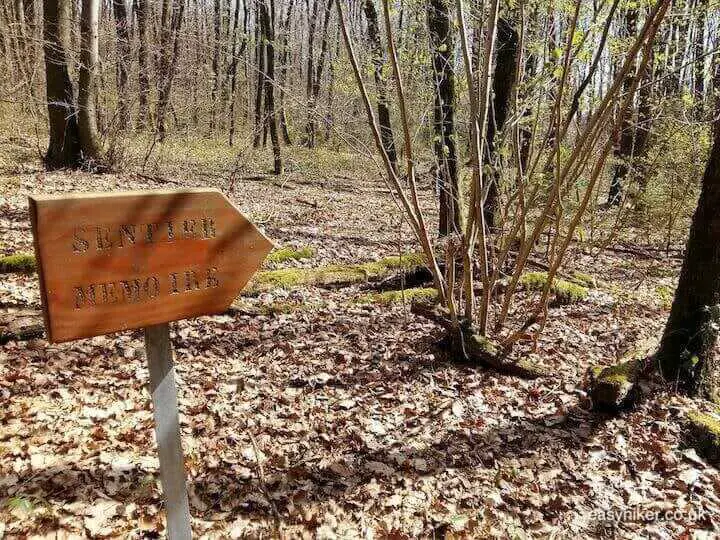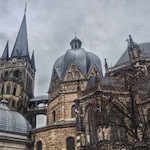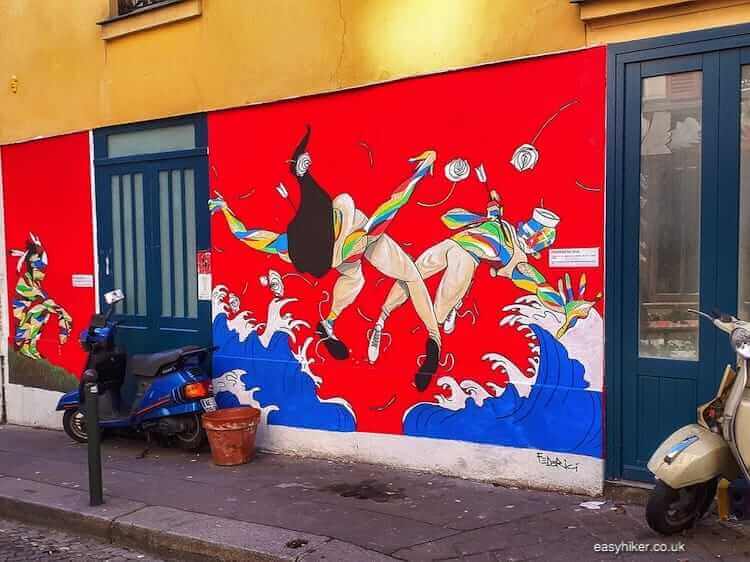The idea was to explore one of Central Europe’s largest urban parks, a park which is roughly the size of a small country (all right: the country I am thinking of is Monaco) and which also doubles up as the main exhibition space for the world’s most famous exhibition of contemporary art.
The idea was definitely NOT to hike all the way from the planet Jupiter to the sun – which, in the end, was what we turned out to do.
But, hey: is not the unforeseen adventure the main ingredient of a good day-out? (Spoiler alert: we found a way of cutting that journey a little short.)
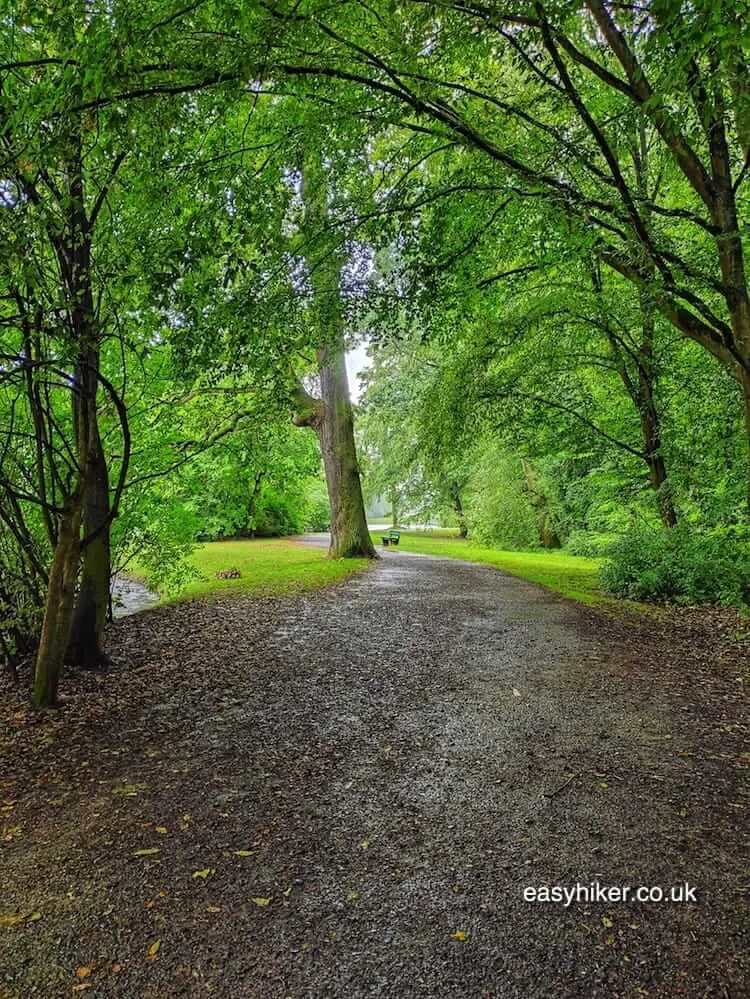
The park we are about to visit today, the Karlsaue, is to its hometown of Kassel (a mid-size provincial city in the centre of Germany) what Central Park is to New York. Both are close enough to the city centre for workers to drop by during their lunch break, for shoppers to rest and recover between bargain hunts and for visitors to take a breather from the arduous task of sightseeing.
Unlike Central Park, however, the Karlsaue was not created from the blueprint of a single architectural vision. Instead it was, as is so often the case with landscaping and townscaping projects in Europe, designed as one thing, in this case a formal French-style garden, and then tinkered with through the centuries until it ended up as something else.
You can still make out the clear straight lines of the original plan …

… but you can also see where this plan was adapted to changing tastes, garden ornament by garden ornament.

The park’s layout was conceived in the 1680s, following which the idea of imposing strict geometric patterns on landscapes fell quickly out of fashion. It became clear that the Karlsaue needed lightening up, and from the early 18th century onward, new elements such as the “flower island” of Siebenbergen were added.

The Baroque still rules inside the perimeter that divides the palace and its back gardens from the outer reaches of the estate …

… but once you stroll beyond the classically-styled walkway, it can feel as if anything that might distract, never mind amuse the eye had been deliberately removed.
Occasionally, the Karlsaue appears to positively revel in the monotony of its vastness.

Vacuums, however, are inherently unstable states. Sooner or later, something will be sucked inside, and in the case of the Karlsaue, this something was modern art.
For the past 70 years, the vast space of Kassel’s Central Park has been filled with conceptual projects, outdoor installations and statues of all kinds – not permanently but only for 100 summer days in intervals of 5 years when the Documenta comes to town, the world’s most important exhibition of contemporary art.
After every edition of the Documenta, the artists are encouraged to move on, taking their works with them, which is why only a handful of pieces have been left behind, most prominently Haus-Rucker-Co’s Rahmenbau (Frame Construction) from documenta 6 (in 1977) which stands next to the Documenta-Halle and the Fridericianum museum which house most of the exhibition’s indoor events.

So when we saw this along the way, …

… our first thought was that we had discovered more surplus stock from a past Documenta.
Closer inspection, however, revealed that we had stumbled upon something much more exciting: this was the Jupiter stagepost of the park’s Planet Walk, a kind of Legoland of our solar system where celestial bodies and the distances between them are represented in scale.
The scale used for this particular miniature version of our solar system was 1:495 million, which means that an average two-storey townhouse from a model village would have shrunk to the size of a molecule, and that each of our steps covered a distance of 350,000 to 400,000 km.
We found the Jupiter metal plate when we were already on the back loop of our walk, so for the rest of our route – to the Orangerie, the ancient estate’s former palace and the centre of the Planet Walk’s miniaturized solar system – we followed the signposted route in the direction of the sun.
The next milestone to look out for was Mars, of course, and when we were approaching the outer perimeter of the palace gardens, I was sure that we had missed it. There was, I was certain, no way that the distance between the inner and the outer planets could be that large, but what do you know: there was, after all.
With the palace almost in full view, we finally spotted the metal plate of Mars.

There is no better illustration of the distances that yawn even between close neighbours in the universe.
Here is a suggestion of how to make the 12-year-old in you happier still: slow down your speed to roughly 50 percent of a brisk walking pace, in order to proceed at what is the exact equivalent of the speed of light (exactly 2.18 km/h “in scale”, or approximately 40 steps a minute). At this speed, it will take you – as it would take a beam of light – 30 minutes to travel from Jupiter to Mars.
This is probably the right place to point out that you can also take the Planet Walk in the opposite direction, heading off from the Orangerie to Jupiter and, if you want, beyond to Uranus and Neptune. But you better not make any plans for the rest of the afternoon.
The model of Neptune is located near a town called Guntershausen on the R1 Cycling Trail, 9 km to the south of the Karlsaue.
And since you ask: to find the nearest star from the sun, you would, on the same scale, have to walk a distance of 40,000 km. That is roughly the equivalent of walking from the North Pole to the South Pole and back. (Better not make any plans for the rest of the week.)
For us, however, coming from the outer reaches of space, the Orangerie was the destination, more specifically its entrance to the Planetarium (which now occupies one wing of the former palace) to which an image of the sun has been attached – in scale, of course, with a width of 2.5 m. Made it, Ma, centre of the solar system!

If you are looking for the representations of the inner planets, search for them on the left side of the garden. Whether or not you take the trouble, however, the point of the walk has surely been made by now.
Representations give us the impression that planets are more or less evenly spaced throughout, which they are not, and that our solar system is essentially made up of matter in the form of celestial bodies. Wrong again!
Cosmic space mainly consists of nothingness, where behind one darkness, another darkness opens. In the end, we found it comforting to know that there are places out there which are vaster still than the Kasseler Karlsaue.


